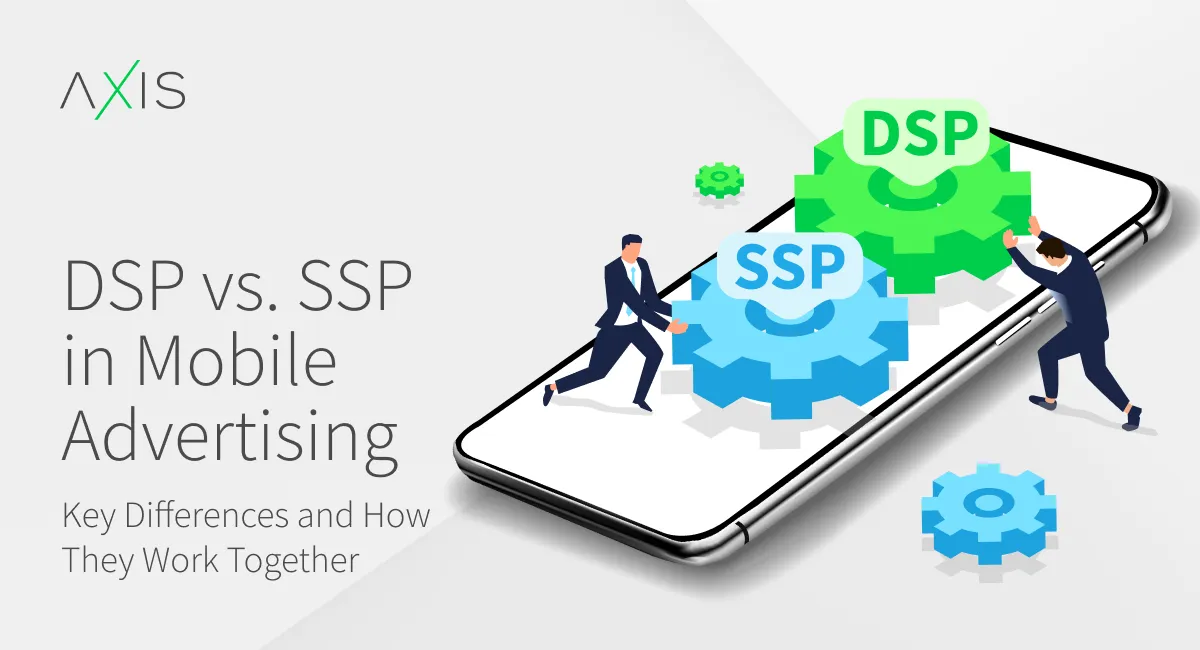
Mobile advertising has become an integral part of the digital marketing landscape. As more consumers shift to mobile devices, advertisers are finding innovative ways to target specific audiences and drive engagement through programmatic mobile ad buying. At the heart of this revolution are two essential components: Demand-Side Platforms (DSP) and Supply-Side Platforms (SSP). Understanding the differences between DSP and SSP is crucial for marketers looking to optimize their mobile ad strategy.
In this article, we will explore the key differences between DSPs and SSPs, how they work together in the mobile ad exchange platform, and why both are necessary for successful mobile advertising campaigns.
What is a DSP in Mobile Advertising?
A DSP mobile advertising platform is a powerful tool that allows advertisers to purchase mobile ad inventory in real-time through programmatic mobile advertising. By using a DSP, advertisers can bid on and buy mobile ad placements across a wide range of websites and mobile apps. This platform enables advertisers to automate the buying process, target specific audiences, and optimize ad spend efficiently.
Key Features of a DSP Mobile Advertising Platform:
Real-Time Bidding (RTB): DSPs allow advertisers to bid on ad placements in real-time, ensuring that the best inventory is purchased at the most optimal price.
Audience Targeting: DSPs provide advanced targeting capabilities, enabling advertisers to focus on specific user demographics, behaviors, and locations.
Cross-Platform Reach: With a DSP, mobile ads can be served across different devices, such as smartphones, tablets, and mobile video ad platforms.
Data-Driven Optimization: DSPs leverage data to optimize ad performance, adjusting bids and placements based on real-time results.
What is an SSP in Mobile Advertising?
On the other hand, a mobile SSP (Supply-Side Platform) is a platform used by mobile publishers to manage and sell their ad inventory to advertisers. SSPs allow publishers to connect with multiple demand sources, such as DSPs, ad networks, and mobile advertisers, increasing the revenue potential.
Key Features of a Mobile SSP:
Inventory Management: SSPs help publishers manage their mobile ad inventory and make it available for sale to advertisers through programmatic ad buying.
Revenue Optimization: By integrating with various demand sources, SSPs help publishers maximize their revenue by ensuring that their inventory is filled with the highest-paying ads.
Real-Time Analytics: SSPs provide real-time analytics, helping publishers understand which ad placements are performing well and adjust their strategies accordingly.
Ad Mediation: Some mobile ad mediation platforms act as a bridge between SSPs and various ad networks, ensuring that the best ad inventory is shown at any given time.
The Role of a Mobile Ad Exchange Platform
A mobile ad exchange platform is a marketplace where advertisers and publishers connect through DSPs and SSPs. This platform enables the buying and selling of mobile ad inventory in real-time, allowing advertisers to purchase ad placements and publishers to monetize their mobile apps or websites. Mobile ad exchanges play a critical role in the programmatic mobile advertising ecosystem by ensuring that advertisers and publishers can find each other in an efficient and automated manner.

How Do DSPs and SSPs Work Together?
While DSPs focus on the demand side (advertisers) and SSPs focus on the supply side (publishers), both platforms work together to create a seamless, efficient ad-buying process. Here’s how they complement each other:
Programmatic Mobile Ad Buying: When an advertiser wants to buy ad inventory, the DSP sends out a bid request to an SSP. The SSP, in turn, offers available ad inventory to the DSP, where advertisers can place bids. The highest bidder wins the ad space, and the ad is served in real-time.
Automated Ad Buying and Selling: The collaboration between DSPs and SSPs enables advertisers to purchase ad placements across multiple mobile ad platforms and networks while publishers can sell their mobile ad inventory to the highest bidder.
Real-Time Data and Optimisation: As advertisers bid on inventory through DSPs, the SSP uses real-time data to match the best ad placement with the best-paying advertiser, ensuring the optimal ad experience for both parties.
Why Use Mobile DSP and SSP?
For Advertisers:
Better Control and Efficiency: By using a mobile DSP, advertisers gain complete control over their mobile ad campaigns, targeting specific audiences, and adjusting bids in real-time to optimize ad spend.
Increased Reach and Scale: Advertisers can access multiple mobile ad networks and platforms, ensuring a wider reach for their campaigns across apps and websites.
Cost-Effective: With programmatic mobile ad buying, advertisers can avoid intermediaries and reduce costs associated with traditional ad buying methods, like direct buys or ad networks.
For Publishers:
Maximized Revenue: Mobile SSP platforms help publishers monetize their ad inventory more effectively by connecting them with multiple demand sources.
Optimization and Automation: SSPs automate the ad selling process, freeing up publishers from having to manually negotiate ad placements and contracts.
Transparency and Control: Publishers have visibility into the performance of their mobile ads, allowing them to make data-driven decisions to maximize their earnings.
Key Benefits of Mobile Ad Platforms
Numerous mobile advertising platform companies offer different capabilities, and choosing the right one is essential for both advertisers and publishers. Some platforms offer features like white-label mobile advertising platforms, which allow businesses to rebrand and customize the platform for their use.
1. Mobile Ad Serving Platforms
Mobile ad-serving platforms are essential for both advertisers and publishers to serve mobile ads across a variety of devices. These platforms ensure that the right ad is served to the right audience at the right time. For example, a mobile video ad platform might serve a video ad to users watching a streaming app, ensuring a seamless and engaging experience.
2. Mobile Ad Mediation Platforms
Mobile ad mediation platforms play a critical role in maximizing revenue for publishers. By connecting with multiple demand sources, these platforms ensure that the most relevant and highest-paying ads are displayed in real-time.
Real-Life Examples of DSP and SSP in Action
Example 1: Programmatic Mobile Advertising for App Developers
Imagine an app developer who uses a DSP mobile advertising platform to advertise their new app. By targeting users who have previously installed similar apps, the developer ensures that their ads are shown to users who are most likely to engage with the app. Using a mobile SSP, the developer also maximizes revenue from in-app ads by making their inventory available to multiple demand sources, ensuring the highest-paying ads are displayed.
Example 2: Mobile Ad Mediation for Publishers
A publisher with a mobile website may use a mobile SSP platform to monetize their inventory. By integrating a mobile ad mediation platform, the publisher ensures that ads from multiple networks, including video ads, display ads, and native ads, are served to users. The SSP helps the publisher maximize revenue by ensuring that the best ads are shown at the best prices.
Tips for Success in Programmatic Mobile Advertising
Focus on Audience Targeting: To maximize your return on investment (ROI), always use advanced targeting features available in DSPs to reach your specific audience.
Experiment with Mobile Video Ads: With the rise of mobile video consumption, investing in a mobile video ad platform is a great way to engage users and drive conversions.
Integrate Mediation: Publishers should consider using a mobile ad mediation platform to get the most out of their ad inventory by connecting with multiple demand sources.
Monitor Performance: Real-time data and performance analytics are crucial for success in programmatic mobile advertising. Always track your campaign’s performance to make data-driven decisions.
Conclusion
Understanding the relationship between DSPs and SSPs in mobile advertising is crucial for any marketer or publisher aiming to optimize their mobile ad strategy. By leveraging programmatic mobile ad buying, and mobile ad mediation platforms, and integrating powerful DSPs and SSPs, advertisers and publishers can reach their target audience more effectively and efficiently. With the increasing use of mobile devices, embracing this programmatic technology is no longer a luxury; it’s a necessity.
By selecting the right mobile ad platforms, companies can drive significant results, improve engagement, and maximize revenue. With the continued growth of mobile advertising, staying ahead of the curve with the right mobile SSP and DSP solutions will set you up for success in the fast-evolving mobile ad ecosystem.